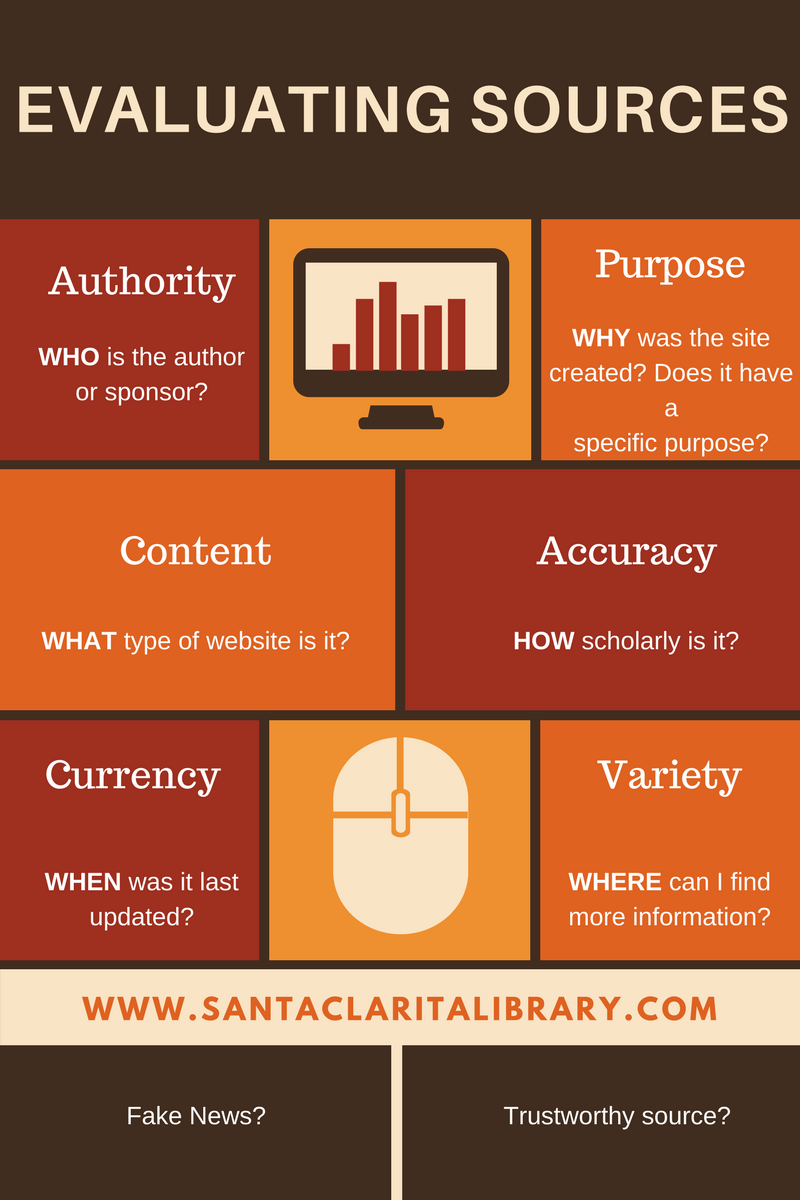Whether you are looking for an academic article or just browsing your Facebook feed, it’s important to know how to evaluate sources of information.
Sometimes it can be difficult to tell if something online is from a news organization that practices traditional journalistic practices, or if its non-credible rift raft that Joe Schmoe wrote from his parent’s basement.
The Trust Project by Santa Clara University has created what they call “Trust Indicators” which you can find HERE. The Trust Project was created to provide “evidence of trustworthy reporting — accuracy, transparency and inclusion –plainly into news practices, tools and platforms”.
Examples of trust indicators are:
- Disclosure of conflicts of interest
- Distinguishes between news, analysis, and opinion.
- Additional links to diverse sources recommended to readers
Questioning where the content is coming from is a GOOD thing. You won’t get faked out if you evaluate the source by looking for these key items:
Currency: How recent is the information, and when was it last updated?
Organization: Is it easy to find the information you need?
Accuracy: How reliable is the information, and are the facts accurate?
Bibliography: How easy is the work to cite in a bibliography? Does it give you the author, title, publisher, and date?
Unfamiliar Topics: How useful is it when you don’t know where to start?
Languages: How easily can the work provide languages other than English

Get the facts, not fake news!
Sources:
Banks, M. (2017). Fighting Fake News. American Libraries, 48(3/4), 18-21
Pogue, D. (2017). How to Stamp Out Fake News. Scientific American, 316(2), 24.
Stanford History Education Group. (2016). Evaluating information: The cornerstone of civic online reasoning. Palo Alto, CA: Author. https://sheg.stanford.edu/upload/V3LessonPlans/Executive%20Summary%20 11.21.16.pdf
SHARE THIS: